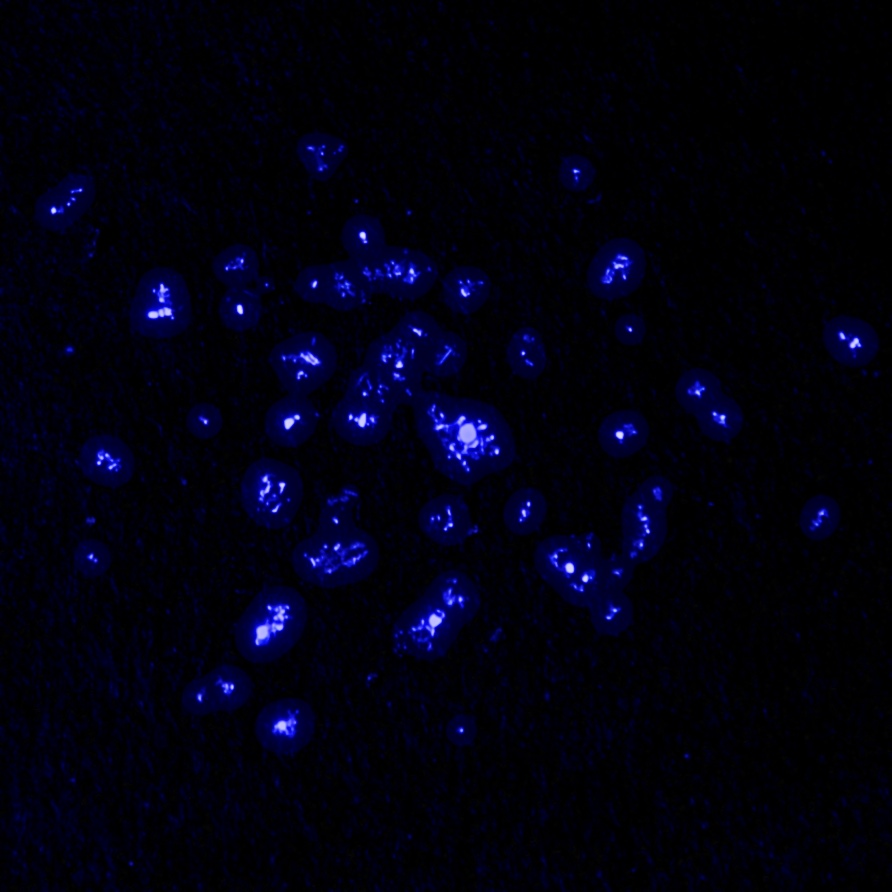Aktinij
89
Ac
Skupina
n/p
Perioda
7
Blok
f
Protoni
Elektroni
Nevtroni
89
89
138
Splošne lastnosti
Vrstno število
89
Atomska teža
[227]
Masno število
227
Kategorija
Aktinoidi
Barva
Srebrna
Radioaktivno
Da
From the Greek aktis, aktinos, meaning beam or ray
Kristalna struktura
Ploskovno centrirana kubična
Zgodovina
André-Louis Debierne, a French chemist, discovered actinium in 1899.
He separated it from pitchblende residues left by Marie and Pierre Curie after they had extracted radium.
Friedrich Oskar Giesel independently discovered actinium in 1902 as a substance being similar to lanthanum.
He separated it from pitchblende residues left by Marie and Pierre Curie after they had extracted radium.
Friedrich Oskar Giesel independently discovered actinium in 1902 as a substance being similar to lanthanum.
Elektroni po lupinah
2, 8, 18, 32, 18, 9, 2
Razporeditev elektronov
[Rn] 6d1 7s2
Actinium glows in the dark with a pale blue light
Fizikalne lastnosti
Faza snovi
Trdnina
Gostota
10,07 g/cm3
Tališče
1323,15 K | 1050 °C | 1922 °F
Vrelišče
3471,15 K | 3198 °C | 5788,4 °F
Talilna toplota
14 kJ/mol
Izparilna toplota
400 kJ/mol
Toplotna kapaciteta
0,12 J/g·K
Zastopanost v Zemljini skorji
n/p
Zastopanost v vesolju
n/p

CAS številka
7440-34-8
PubChem CID številka
n/p
Atomske lastnosti
Atomski polmer
-
Kovalentni polmer
215 pm
Elektronegativnost
1,1 (Paulingova lestvica)
Ionizacijski potencial
5,17 eV
Atomski volumen
22,54 cm3/mol
Toplotna prevodnost
0,12 W/cm·K
Oksidacijska stanja
3
Uporabe
Actinium is used as an active element of radioisotope thermoelectric generators, for example in spacecraft.
The medium half-life of 227Ac makes it very convenient radioactive isotope in modeling the slow vertical mixing of oceanic waters.
225Ac is applied in medicine to produce 213Bi in a reusable generator or can be used alone as an agent for radiation therapy.
The medium half-life of 227Ac makes it very convenient radioactive isotope in modeling the slow vertical mixing of oceanic waters.
225Ac is applied in medicine to produce 213Bi in a reusable generator or can be used alone as an agent for radiation therapy.
Actinium is highly radioactive
Izotopi
Stabilni izotopi
-Nestabilni izotopi
206Ac, 207Ac, 208Ac, 209Ac, 210Ac, 211Ac, 212Ac, 213Ac, 214Ac, 215Ac, 216Ac, 217Ac, 218Ac, 219Ac, 220Ac, 221Ac, 222Ac, 223Ac, 224Ac, 225Ac, 226Ac, 227Ac, 228Ac, 229Ac, 230Ac, 231Ac, 232Ac, 233Ac, 234Ac, 235Ac, 236Ac